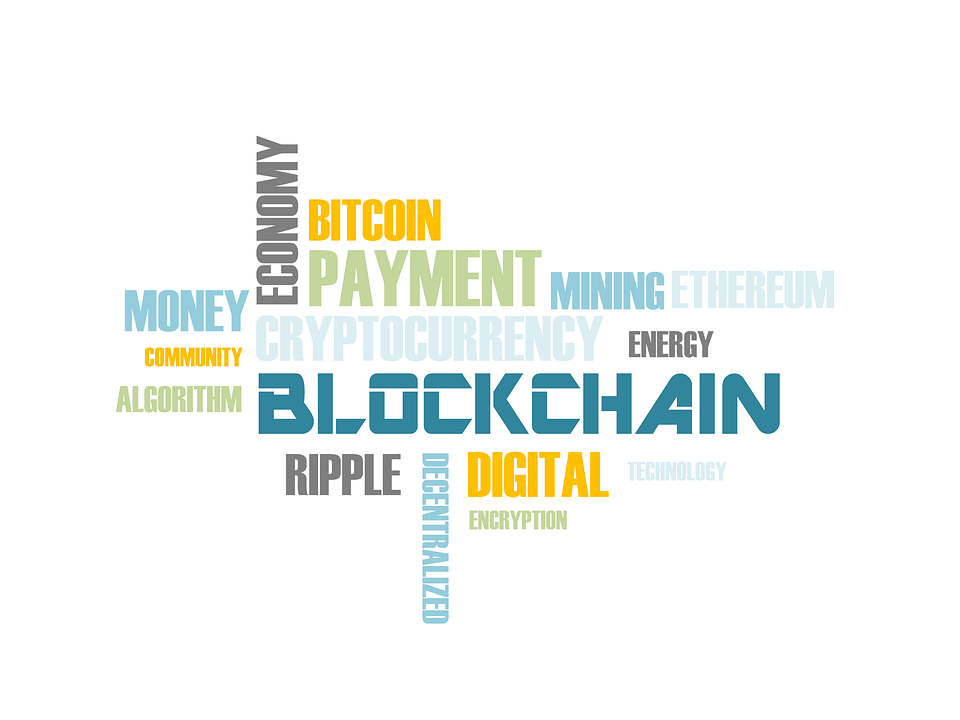

Hello dear cryptoholics. If you rambled on for dozen of articles about blockchain and they scared the bejeezus out of you, you would be glad to receive a lot of love here.
AirdropAlert will explain what blockchain is like you’re five.
Blockchain is a chain of blocks
For all the uninitiated, blockchain is neither an app, nor a successful venture business in Silicon Valley, nor an island in The Pacific Ocean. It’s a compilation of different technologies under the overall umbrella of one name.
What’s interesting, those technologies are not necessary new: b-money (1998), timestamping services (1991-1999), hashcash (2002), Merkle Tree (1980) etc.
Merkle Tree, a fundamental part that underpins the concept, looks like a chain of blocks with data, thus, the name, blockchain.

An example of Merkle tree
If the project is popular, say, Waves , Ethereum (ETH) or any other blockchain, and a lot of people get involved with it, their blockchain constantly grows. Because users constantly add their data to the network: either blocks or transactions.
Did I say users? Not all of them have got the same level of authority on the blockchain network.
Generally, miners are proficient users who add blocks. Everybody else can simply transact.
You’re probably marinading in your own impatience now, Transact what?
Although in the modern world you can tokenize almost everything, how to send money through blockchain is still the hottest topic
The first and foremost reason for famous digital money Bitcoin to see the light was actually Satoshi’s hatred to all the middlemen between sellers and buyers.
Banks get a huge sliver of the pie for doing what, exactly?
Bitcoin was the very first digital money that didn’t need banks. Ten years ago it was revolutionary.
Today, though, the grandfather of the crypto doesn’t meet all the needs of the modern society: speed and scalability as an illustration.
For this reason, multiple cryptocurrencies on top of old or new blockchains pop up every now and then. Why? To compete with Bitcoin for the right to beat traditional money.
With blockchain, you can tokenize almost everything, but these days, via multiple blockchains, users mostly transact money
That’s why this technology changes things pronto and sends the existing financial system spiralling.
You bet. If I were a bank, I would also live a blue-colour life. Money with no banks involved might significantly eliminate jobs in the financial sector. Plus, prices without fees charged by banks look very tempting, don’t they?
To conclude, blockchain is an entirely new way of documenting data, mostly money. With its capacity to secure transactions cryptographically and publicly, some people call it Web 3.0 that will disrupt the financial sector.
How does blockchain work?

If you read the previous part carefully, you would guess that the answer to this question is not rocket science. How a blockchain works depends on the blockchain! 🙂 Because blockchains might be very different.
Let’s just pick one of the most popular projects out there, Ethereum, and try to break it down into logical components.
If you want to learn about any other platform, feel free to delve into its whitepaper and look for the technical parts.
As for Ethereum, like a lot of other blockchain platforms, it consists of four logical components:
- a virtual machine,
- a node application,
- a shared ledger,
- and a consensus algorithm.
EVM or Ethereum Virtual Machine
From a practical standpoint, you can think of EVM as a very special environment for computers on the Ethereum network to talk to each other.
To talk to each other, these computers run specific software. But why do they need to talk? Good question.
According to old-world traditions, businesses store valuable information with companies that are offering their servers to them.
With blockchains, the situation is different. Because thousands of peers on the network share access to the information on an equal basis, they have to interact with each other. This is how they download new information from the outer world.
A node application
Remember, the specific software your computer needs to run, to communicate with the Ethereum blockchain?
It’s a good practice to call this software a client or a node. The most popular Ethereum nodes/clients are Geth and Parity.
Nodes establish a P2P communication channel with other nodes, sign and broadcast transactions, mine blocks, deploy and interact with smart contracts.
The shared ledger
The shared ledger is a kind of journal where everybody reports on their actions. Interestingly, in the case of Ethereum, it’s no longer just people but also programs, smart contracts.
This ledger is a time-stamped record of all the events on the blockchain. Nodes constantly exchange new information with each other to be up-to-date with the latest events on the blockchain.
The consensus algorithm
If you know anything about consensus in Bitcoin, you probably already understand how somewhat the same algorithm works in Ethereum.
The consensus is important to establish the fact that something on blockchain has happened and everybody supports that new state.
The question is how to establish this consensus. First of all, remember miners? Those proficient users that can add blocks?
Depending on the a blockchain, miners add blocks in a different way. With Ethereum, though, they solve very complicated puzzles to prove they have spent a certain amount of electricity to produce a rightful block.
This is how the network protects itself from hackers. No hacker in their right mind will spend that much energy to create malicious chain of blocks. They will spend more money for electricity than earn as a result of the hack.
So now you know that in the case of Ethereum, EVM is the very basic layer for machines to communicate with each other. Node applications interact with this environment to change the shared ledger. And the proof-of-work consensus mechanism helps produce new blocks and protect the network from the attacks.
Again, depending on a blockchain, the way nodes interact as well as the consensus mechanism might vary significantly. Thus, there are so many different blockchains for different purposes and with different functionalities.
Blockchain business cases
Ethereum (ETH)
Since I have started with the Ethereum blockchain, let me explain how it can be of use for your business.
Ethereum is one of the most famous blockchain platforms out there. For many years, Ether, its native token, has been maintaining the second place in the ranking of top crypto in the world.
This distributed ecosystem made the concept of dApps possible and popular. When it only started in 2015, every business could hire a developer to produce one of the first decentralized apps, which was kind of cool.
You still can build your dApp on top of Ethereum now or run an ICO if you wish.
Ripple (XRP)
Ripple (XRP) is one of the most controversial blockchain solutions out there. Some people say it’s not a blockchain, others claim it’s a permissioned blockchain for businesses where governance is not the main feature.
What you should know about Ripple is that you can use it to transfer money cross borders without multiple middlemen aka banks.
Ripple will take your fiat money, transform them into native tokens and send to another account where a recipient will redeem her tokens.
So if your business has to do with sending money overseas, Ripple might be a good payment system to use.
Post Scriptum
Hopefully, after reading this article you know that the devil is not so black as it’s being painted. Blockchain is just a technology or rather a lineup of technologies used to transact information in a secure way.
The reason why Satoshi Nakamoto invented Bitcoin (BTC) was because he wanted to get rid of all the banks that are taking cut on users’ transactions. And many blockchains today were created as a response to Bitcoin or Litecoin, to transfer money.
To understand blockchain, you should know that it consists of several logical levels and depending on a blockchain might vary. Yet, the nature of a true blockchain is always the same: the equal access to data and a very secure method of storing it.
Wanna know more about blokchains? Check out such projects as Ethereum, Ripple, TRON, Stellar and many many more.
***
Did you like the article? Please click the  button and keep on reading!
button and keep on reading!
What is Ripple (XRP)? ← P R E V I O U S
N E X T → What is TRON (TRX)?




